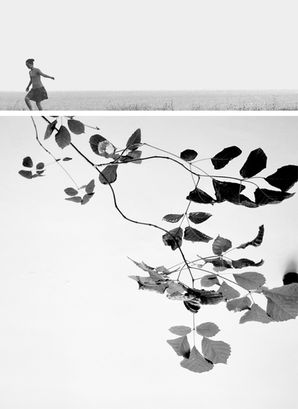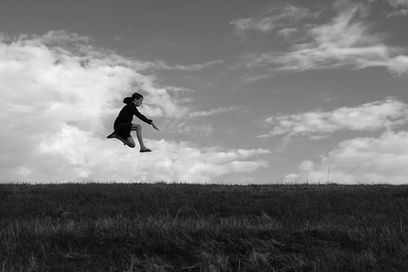
HOMEMADE COSMOS
May 4, 2022
INTERVIEW
PHOTOGRAPHY Leonardo Cassi
INTERVIEW Melanie Meggs
The world of visual creation is a vast and mysterious realm, full of beauty and complexity. It takes a special eye to capture the hidden depths of everyday objects and transform them into something extraordinary. Enter Leonardo Cassi, a graphic designer and photographer who is driven by an insatiable curiosity and appreciation for the nuances of everyday life. With his series HOMEMADE COSMOS, Leonardo has crafted a captivating and surreal universe from the ordinary.
Using high contrast and unexpected angles, Leonardo is able to capture the true essence of his subjects. His eye for detail and creativity is unparalleled, as he strives to unlock the mysteries of the mundane. He seeks to uncover the soul of a scene, to show how even the most mundane objects can be imbued with life and emotion. In Leonardo’s world, nothing is boring; everything has the potential to become something remarkable.
Through his photographic artistry, Leonardo hopes to inspire others to look beyond the surface and see the world with new eyes. By pushing the limits of imagination, he hopes to show that anything is possible. As he says, “There’s no such thing as a banal subject. Everything speaks, if we learn how to perceive.” With his work, Leonardo invites us on a journey of exploration and discovery, into the depths of our own creativity.

“HOMEMADE COSMOS is a demonstration of my definition of photography: it is a tool which enables me to detect and explore the hidden dimensions of my subjects. Each shot recreates an astronomy or science fiction scene from the normality of daily things. The contrast is always very deep and the lighting is dim and directional, to turn the ordinary into epic. More than the beauty of what’s in front of the lens, I am interested in its essence. I try to capture its soul, which sometimes hides in the shapes, sometimes in the color rhythms, sometimes in the structure of the material or in the battles between shadows and lights.”
IN CONVERSATION WITH LEONARDO CASSI
THE PICTORIAL LIST: Leonardo please tell us about yourself?
LEONARDO CASSI: I was born and raised in Milan. Milan is a business-oriented city, but its cultural and artistic life is very dynamic and, at times, you can still breath that unique creative atmosphere from the sixties. This element surely contributed to inspire my studies and my passion for art. Nowadays everything is unfortunately more fashion-oriented and everything must be trendy and expensive. That's the part I like less and one of the reasons why I moved to Prague, where I live and work as a photographer and graphic designer.
TPL: What draws you to photography and art? How did your journey into photography begin?
LC: Visual creation has always been a vital necessity for me. My first contacts with photography started with my dad, who owned a nice Yashica reflex and made me often try it and experiment with it. I then expanded this passion during the audio/video classes in my secondary school years and ended up studying ancient art and literature in university. After it, I took a postgraduate master class in photography and graphic design in Milan and other two classes in Prague. During those years I started having my first exhibitions.
TPL: Talk to us about your method of working and experimentation before the final image. Did you know exactly what you wanted from the beginning? How long did each image take to create?
LC: In my photography I often use long exposure times with close shutters. The lighting is often direct and involves the use of flashlights, infrared lamps, candles, or simple daily light. What I try to accomplish is breaking the daily object's apparent banality by showing their hidden different faces. I usually don’t have the scene already built in my mind before. I rather look away for a bit, to let the objects express their soul freely.
TPL: Does your project HOMEMADE COSMOS differ from your previous work? Is this type of visual storytelling something you would like to pursue again in future projects? What do you think is your next chapter in your exploration with future projects?
LC: This series is a precise example of my photography and my expression: turning the banal into epic. For my next exhibitions, I’m working on two new parallel series. One focused on the apparently alien beings that can be found in our daily food and the other dedicated to the imperfection and incompleteness of reality, in black and white on film. The main core of my experimentation is the exploration of the voids and volumes of the daily objects.
TPL: What do you want people to take away from this series? What do you want them to be asking themselves?
LC: Photography and art are simply my language of expression. I don't take photos because of a passion, but through them I try to express myself. My introvert nature has always failed me in actively showing my voice, my thoughts. Through conceptual photography I feel perfectly free to dare, to tell what I feel and I believe.
Creating and enjoying art has always been for me the most powerful tool to merge with the rest of the universe outside my shell. The final aim of my expression is taking my viewers a bit beyond the apparent reality of daily life. To give my subjects a moment of glory in their boring, unnoticed life. I never found interesting getting an expressive shot of an already beautiful subject. On the contrary, I believe that a good challenge for photography – and for art in general – is to transform blend subject into an intense scene.
Because there’s no such thing as a banal subject. Everything speaks if we learn how to perceive.
Creating and enjoying art has always been for me the most powerful tool to merge with the rest of the universe outside my shell.

TPL: Does the equipment you use help you in achieving your vision in your photography? What camera do you use? Do you have a preferred lens/focal length?
LC: I use a Canon EOS Mark V reflex for digital and an EOS 33 for film. In the great majority of my shootings, I use the tripod. My favorite lenses are 70-300mm macro and 50mm portrait. The choice of field is usually deep, using longer exposure times and close shutters. I rather keep a low ISO and prolong the exposure time, to avoid grain.
TPL: Is there any advice that you would give yourself if you started photography all over again?
LC: If I started studying photography all over again, I’d surely focus much more on the film developing techniques and on the experimenting part from the beginning. Also, to be more social, to reach out more to fellow students and professors, to be better at networking and PR. That has always been my weakest side.
TPL: Do you have any favorite artists or photographers you would like to share with us, and the reason for their significance?
LC: The photographers who most inspired me and influenced my work are Josef Sudek, Man Ray, Harry Callahan, André Kertész, and Ansel Adams. The last four mainly for their work and techniques,
Josef Sudek also for his way to share his soul with his photography subjects.
TPL: If you could just choose one photographer to photograph with for a day...who would you choose? And why?
LC: A day with Josef Sudek would certainly be a priceless life experience for me. I’m not talking only from a photography and technique side, but also from a human perspective. His solitary life inspired him his magical relationship with the daily objects and the views of his little universe. His intense and metaphysic perception is something I’m constantly seeking, shot after shot.
TPL: "When I am not out photographing, I (like to)...
LC: I love playing Lego with my son, cycling and jogging, reading while drinking coffee and eating cookies, hiking along mountain pines."

Through his stunning work, Leonardo Cassi has proven that everyday objects can be transformed into something extraordinary. His series invites us to unlock the mysteries of the mundane and see the world with new eyes. By pushing the boundaries of imagination, Leonardo encourages us to discover the hidden depths of our own creativity.









































